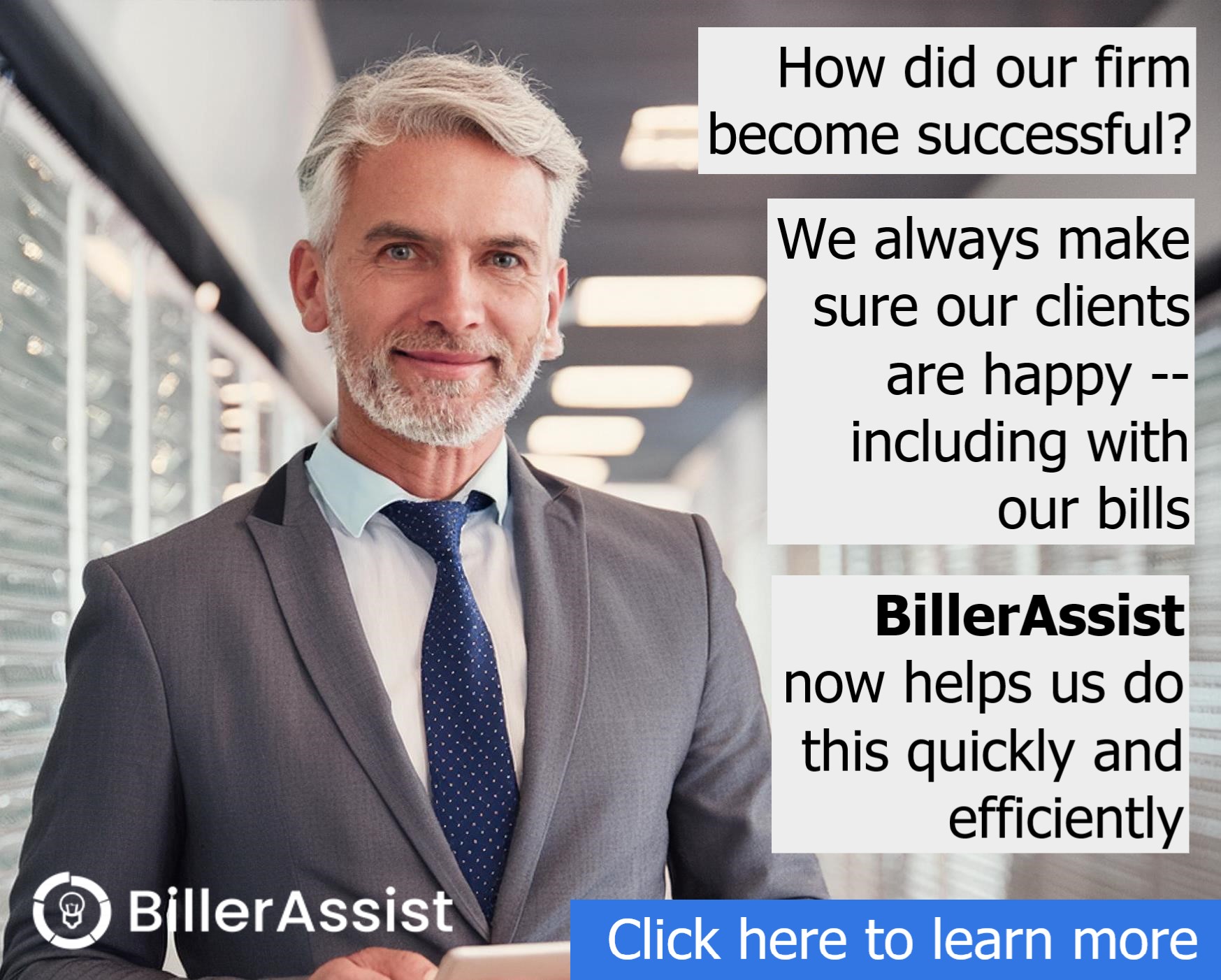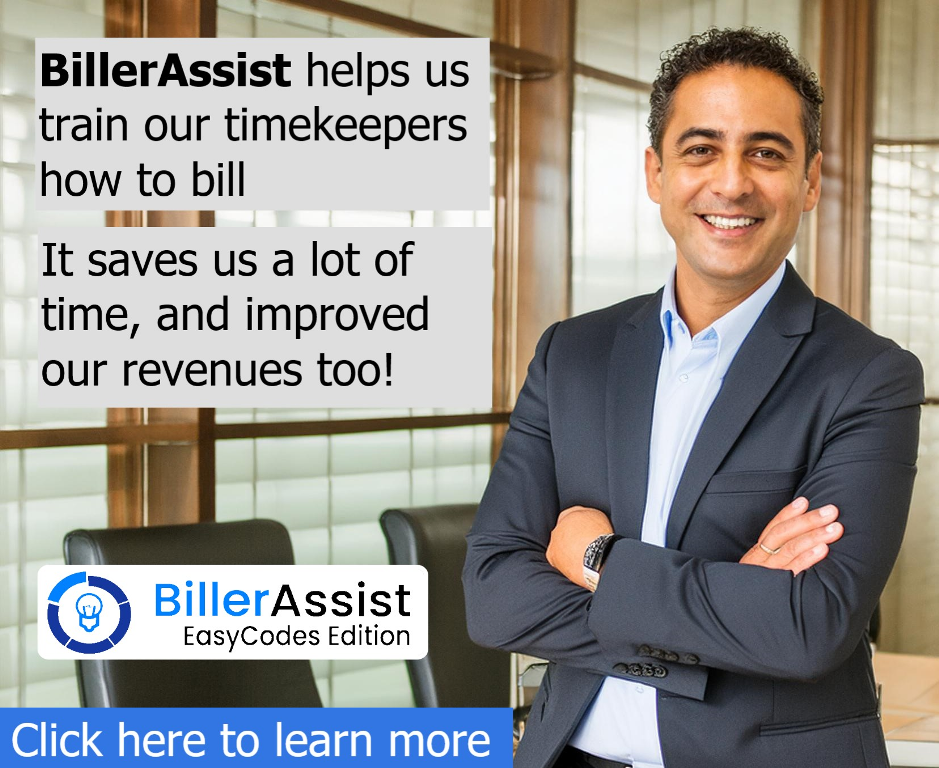How to Use Your Own Data to Maximize Efficiency
Successful law firms should always be looking for ways to optimize realization and collection rates, client budget requirements, and invoice processing and payment.
This task has become much easier and more efficient using AI-assisted billing applications.
What’s more, with automation in law firms, the benefits of this technology in improving efficiency also provide law firms with vital data that allow for more effective management decisions and greater profitability.
The process is neither difficult nor complex, when the right applications are used.
The Old Ways of Legal Billing Are No Longer Viable
According to several recent law firm surveys, the recent financial turmoil was not devastating to law firms The surveys show that large USA law firms generally experienced “mid single-digit revenue growth”, while smaller firms generally saw only single-digit declines.
That’s the good news. The bad news for law firms is that cost-cutting by clients as to their legal expenditures did not decline. In fact, the relatively small recent gains were not enough to significantly buck the trend among clients toward reducing and controlling legal expenditures.
Collection rates have decreased by over 10% compared to numbers ten or so years ago, according to recent analysis out of Georgetown Law. Although the financial crisis was the original impetus, as time goes by, it is becoming increasingly difficult to blame this phenomenon on the Great Recession alone. The economy recovered; collection rates did not.
What makes this figure so alarming is the fact that while collections have decreased, the average hourly rate for law firms has risen 11%. This shows that simply raising rates is not the way to address dwindling collection rates. Quite the contrary, it may be causing them.
This theory is highlighted in the Georgetown Law report. It references the fact that clients will simply pay less of more expensive bills.
Moreover, the report indicates, clients will be put off by being asked to pay more for the same services, especially if hourly rate increases appear arbitrary and solely focused on money-making.
According to the legal advisory podcast the Un-Billable Hour, it is not a financial calamity that is to blame for dwindling revenue. Instead, the podcast points to poor practice management as the chief cause of lost income.
More specifically, unsatisfactory profits can often be sourced to lack of sufficient training for timekeepers in proper billing procedures.
When timekeepers are not properly trained how to bill, their work is often not translated into time that is actually billed.
On the other hand, if their poor billing practices are reflected in invoices that sent to clients, the lack of training can often lead to a rise in billing disputes. Increased billing disputes lead to a decrease in collections.
Unfortunately, trying to maintain or increase profits by raising rates can create a negative feedback loop from which it is extremely difficult to extricate yourself.
On the bright side, advancing technology offers solutions to improve efficiency and easily make fundamental changes that can improve both efficiency and profitability.
According to an Industry Outlook report from the legal consulting firm Major, Lindsey & Africa there is great value in software that transparently rejuvenates productivity in a manner that makes it more difficult for clients to dispute what they are being charged. The idea is that finding a way to efficiently and consistently produce invoices — that are accurate and reasonable beyond reproach — is the best way to ensure client payment.
Automation In Law Firms Leads to Increased Revenue
As significant additional benefit, if non-billable tasks become streamlined or eliminated, it will leave additional time for billable tasks. Completing more billable tasks means further increasing your revenue.
It should come as no surprise that clients can’t pay bills before they receive them. Nor should it be shocking that clients are less likely to pay invoices containing mistakes and inconsistent charges.
Because billing must be done and it must be done correctly, it can become a significant time-consuming process. Eliminating bottlenecks in the billing process is therefore of utmost importance.
When clients require the use of Uniform Task-Based Management System (UTBMS) coded bills in electronic formats like Legal Electronic Data Exchange Standard (LEDES) the time-consuming effects are exacerbated.
By design, UTBMS codes and LEDES invoices are intended to enhance the transparency and standardization of the billing process, thereby minimizing billing disputes.
The LEDES Oversight Committee set out to accomplish this by creating UTBMS codes to make it easier to sort and organize legal work and expenses. These codes are then organized into LEDES formatted invoices that make it easy for clients to review.
In practice, however, the manual application of these codes is often cumbersome and tedious. Not only that, but manual UTBMS coding is so prone to human error that it regularly off-sets the accuracy standardization the codes are designed to promote.
This can mean going through the time-consuming and unbillable process of UTBMS coding a LEDES invoice. The time it takes to do the coding could have been used for a billable task, meaning it was effectively wasted. On top of all that, if the invoice is rejected due to coding or formatting errors, you have to do it again, which in turn means you’ve further delayed payment and likely annoyed your client.
Thomson Reuters 2023 Legal Management Trends report details the benefits of automated application as an alternative to the slower, less accurate manual method. Firms that use automated billing applications tend to see fewer billing disputes as any red flags are highlighted internally by the programs before clients can see them. On top of the procedural benefits, automated billing is unquestionably faster and less prone to human error.
There is also a less obvious benefit to making use of automated billing software. The software creates an accurate and up to date compilation of your firm’s data. This data can be analyzed to aid in firm management. Using your firm’s own data you can make the more well-informed decisions on hiring and resource allocation, as well as seeing which strategies were most effective for specific types of cases. With this information, similar cases can be streamlined down the road.
This technology is not wishful thinking; it is available as you are reading this.
These apps can even interface with your existing billing and practice management platforms seamlessly. Furthermore, there are applications that automate the application of UTBMS codes and easily create LEDES formatted invoices. It’s an easy and cost-effective way of saving time and aggravation.
Clients are more cost-conscious than they have ever been. They require transparency and they won’t pay if they don’t get it. The artificial intelligence and machine learning used in automated billing make transparency a foregone conclusion.
If you’re worried about teaching your firm an entirely new system and losing productivity while they get around the learning curve, don’t be.
The whole point of these applications is that they are as easy to use as they are to implement. In fact, the apps specifically are designed to work with your existing billing system.
Aside from kick-starting your firm's efficiency in tangible ways like time and effort, these tools will also produce data that can help you create a roadmap to even greater efficiency and success down the line.
Conclusion
Ineffective billing practices are costing firms money. From the time it takes to get bills to clients, to the fact that clients won’t hesitate to contest those bills if any errors are present, it is clear that traditional, manual billing practices are no longer efficient.
There is a new way forward. By automating applicable day to day processes your firm can increase its accuracy, transparency, and efficiency in a way that is easier than what you were doing before.
Moreover, with the data produced by these AI and machine learning applications, you can see what’s working and what isn’t, and guide your firm in the most profitable direction with data-driven practice management.




